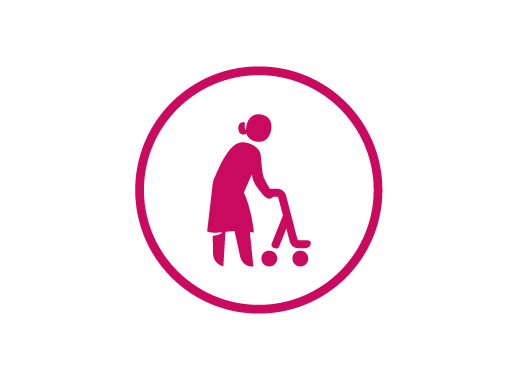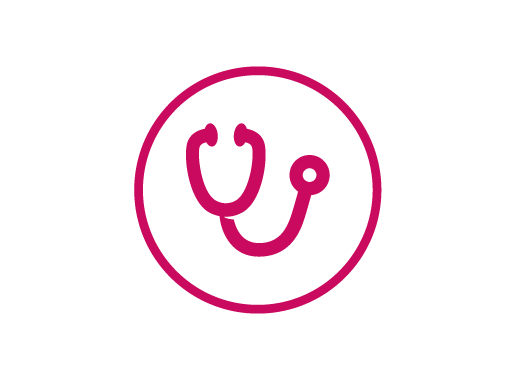
Health care expenditure
How will health care expenditure evolve in the future?

The main developments in the Trend Scenario
Question 1: How will health care expenditure evolve in the future?
- Health care expenditures will double to 174 billion euro in 2040.
- During the period 2015-2040 health care expenditures will increase by 2.9 percent per year on average.
- Health care expenditure per capita will increase from 5,100 euro in 2015 to 9,600 euro in 2040.
Question 2: What will we spend our health care budget on in the future?
- Expenditure on health care for people aged 65 and over as a share of total health care expenditures will increase from 43 percent in 2015 to 59 percent in 2040.
- Expenditure on health care for women is higher than for men, and this difference will increase in the future.
- Expenditure on the treatment of cancer will grow fastest of all disease groups by 2040.
- Expenditure on health care for the elderly will grow fastest of all the health care sectors.
Question 3: Why will health care expenditures increase in the future?
- Two thirds of the increase in total expenditures can be attributed to developments in medical technology and economic growth; one third to the ageing of the population and population growth.
- The growth in expenditure on cancer treatment will be due in particular to technological developments.

How will health care expenditure evolve in the future?
In the Trend Scenario, real health care expenditure will increase to 174 billion euro in 2040. This is a doubling compared with 2015. The expression ‘real health care expenditure’ implies that price developments are not included in the projection of expenditures. Hence, expenditure is expressed in 2015 prices. The scope used for health care expenditure is based on a societal definition of direct medical health care costs and includes both public and private expenditures. Expenditures on child care (nursery), welfare services and youth care are not included. The projection is based on an analysis of health care costs during the period 2003-2015. In this period, real health expenditure increased by on average 2.8 percent per year. In the recent period 2013-2015 strict cost control was maintained. The resulting limited growth in health expenditure was included in the trend analysis (see next graph). Health care expenditure as a share of GDP will increase from 12.7 percent in 2015 to 16.4 percent in 2040. This is based on an assumed GDP growth of 1.8 percent per year.
Indicator(s) used:): Absolute health care expenditure, in euros. The scope used is based on a societal definition of health care costs which includes both public and private health expenditures (co-payments, insurance premiums, complementary insurance). Expenditures on child care (nursery), welfare services and youth care are not included as these are not directly related to health care. Health care expenditure concerns only direct medical costs; the costs of, for example, sick leave and incapacity for work are not included.
Source(s) used (in Dutch): Statistics Netherlands (CBS): Health Accounts, data processed by RIVM.
Further information:
The increase in health care expenditure of on average 2.9 percent per year in the period 2015-2040 implies that health care expenditures in 2040 will be double the expenditures in 2015 (see previous graph). In the Trend Scenario, a constant growth factor (1.7 percent) was assumed, on top of the demographic developments. Because of these demographic developments future health care expenditures will fluctuate slightly. The growth factor is based on an analysis of the health care expenditure in the period 2003-2015. During this period the annual expenditure growth varied between 5.9 percent in 2002 and a shrinkage of 1.2 percent in 2014 (the 2014 figure is provisional). On average health care expenditure rose by 2.8 percent per year, 1.1 percent of which is attributable to demographic developments. The figure shows the long-term development of health care expenditure. It shows that the growth in health care expenditure depends on the economic situation. Periods of high and low growth alternate. In the long term, the period from 1973 to 2015, the increase in health care expenditure equalled the increase in the recent period 2003-2015. Hence the short-term trend does not deviate from the long-term trend.
Indicator(s) used:): Growth in health care expenditures (percentage).
Source(s) used (in Dutch): Statistics Netherlands (CBS): Health Accounts, data processed by RIVM.
Further information:
In the Trend Scenario, health care expenditure per capita will rise from 5,100 euro in 2015 to 9,600 euro in 2040. Expenditures per capita are partly publicly funded, through insurance premiums, and partly by other sources: other expenditures. These other expenditures are mainly co-payments and complementary health insurances. The publicly funded expenditures will rise from 3,800 euro per person in 2015 to 7,700 in 2040; the other expenditures will rise from 1,200 euro in 2015 to 1,900 in 2040. The ratio of public funds and other funds is a policy choice. The Trend Scenario assumes that no new policy will be implemented. Hence, the future ratio between public and other funds equals the ratio in the latest national health care budget.
Indicator(s) used:): Absolute health care expenditure per capita, broken down into public and other funding sources.
Source(s) used (in Dutch): Cost of Illness Studies by RIVM.
Further information:
In 2040 health care expenditure will be twice as high as in 2015

What will we spend our health care budget on in the future?
Elderly people have higher health care costs than young people. This can be seen from the age profile of health expenditure. In 2015, the health care for people aged 65 years and over accounted for 44 percent of total health care expenditure. In the period up to 2040, this will increase to 59 percent. 72 percent of the total growth in health care expenditure in the period 2015-2040 will be attributable to the growth in expenditure for people aged 65 and over (not shown in graph).
These results have been updated in October 2018.Indicator(s) used:): Health care expenditure in 2015 and in 2040 by age, percentage of total health expenditure.
Source(s) used (in Dutch): Cost of Illness Studies by RIVM.
Since the first publication of the results on health care expenditures in the Trend Scenario in June 2017, updated data have become available. Due to this update, the projections on health care expenditures have changed compared to the original publication.Further information:
In 2015, health expenditure for women was 9.9 billion euros higher than for men. By 2040 this difference will amount to 30 billion euros. This increase in the difference in health expenditure is due to the high number of older women compared to older men. This difference will remain to exist. In the Trend scenario, the number of men increases by 5.9 percent; the number of women by 6.8 percent. Since older people have higher health care expenses than other age groups, the difference between men and women will continue to increase.
These results have been updated in October 2018.Indicator(s) used:): Absolute health care expenditure by sex and age in 2015 and 2040.
Source(s) used (in Dutch): Cost of Illness Studies by RIVM.
Since the first publication of the results on health care expenditures in the Trend Scenario in June 2017, updated data have become available. Due to this update, the projections on health care expenditures have changed compared to the original publication.Further information:
The group of mental disorders, including dementia and intellectual disabilities, will remain the disease group with the highest share of total health expenditure in 2040. During the period 2015-2040, expenditure on the treatment of cancer will rise the fastest. In 2040 the treatment costs of cancer will have more than quadrupled compared to 2015. The projection for health care expenditure is based on the relatively high growth in expenditure for the treatment of cancer during the period 2003-2015 (not shown in graph). The increase in expenditure on endocrine, nutritional and metabolic diseases is particularly due to higher expenditure on diabetes mellitus.
These results have been updated in October 2018.Indicator(s) used: Absolute health care expenditure by diagnosis group (ICD main groups) in 2015 and 2040.
Source(s) used (in Dutch): Cost of Illness Studies by RIVM.
Since the first publication of the results on health care expenditures in the Trend Scenario in June 2017, updated data have become available. Due to this update, the projections on health care expenditures have changed compared to the original publication.Further information:
Of all the health care sectors, expenditure on care for the elderly will increase the fastest in the Trend Scenario, from 20 percent of total health care expenditure in 2015 to 25 percent in 2040. This corresponds to an average expenditure growth of 3.8 percent per year. Around three quarters of this growth can be attributed to demographic developments. Because of the ageing of the population, expenditure on elderly care will rise faster than total health care expenditure. In 2040, total health care expenditure will have doubled compared with 2015; for health care for the elderly the growth factor is 2.6. Health care for the elderly includes all providers of health care for the elderly. ‘Other health care’ includes primary health care, drugs and therapeutic resources, oral health care and curative mental healthcare. Other health care expenditure, including health care for the disabled, is included in the group ‘other sectors’.
These results have been updated in October 2018.Indicator(s) used: Health care expenditure according to health care sector during the period 2015-2040, percentage of total health care expenditure.
Source(s) used (in Dutch): Cost of Illness Studies by RIVM.
Since the first publication of the results on health care expenditures in the Trend Scenario in June 2017, updated data have become available. Due to this update, the projections on health care expenditures have changed compared to the original publication.Further information:
Of all the health care sectors expenditure on elderly care will increase the most

Why will health care expenditures increase in the future?
In the Trend Scenario a third (29.3 billion) of the growth of total health expenditure (87.8 billion) is based on demographic developments. Two third (58.5 billion) can be attributed to other developments, such as changes in health care use as a result of medical technology and income growth.
Indicator(s) used:): Absolute health care expenditures broken down by developments in demography and other developments to driving forces.
Source(s) used (in Dutch): Cost of Illness Studies by RIVM.
Further information:
In the Trend Scenario, expenditure on the treatment of cancer will be a factor of 4.3 times higher in 2040 than in 2015. This corresponds to an average annual growth of 6 percent. A sixth of this can be attributed to demographic developments. Five sixths of the growth is attributable to other developments, such as medical technology and income growth. Of all the disease groups, health care expenditure on cancer will rise the fastest; the share of this diagnosis group of total health care expenditures will increase from 6.5 percent in 2015 to 14percent in 2040. This will make it the second most expensive disease group, after mental disorders. Expenditure on mental disorders includes expenditure on dementia and intellectual disabilities.
These results have been updated in October 2018.Indicator(s) used:): Average annual growth in health care expenditures 2015-2040 (percent) per diagnosis group (ICD main groups), broken down by key drivers.
Source(s) used (in Dutch): Cost of Illness Studies by RIVM.
Since the first publication of the results on health care expenditures in the Trend Scenario in June 2017, updated data have become available. Due to this update, the projections on health care expenditures have changed compared to the original publication.Further information:
Most of the increase in health care expenditure will be due to technological developments and income growth
This Trend Scenario is part of the Public Health Foresight study 2018 (VTV-2018), and was published in July 2017. In December 2017, Thematic Foresight Studies on Health on Future health care demand, Wider determinants of health and Technology were published. In June 2018, the final products of the VTV-2018 became available. These are Options for Action for selected urgent societal challenges, and a Synthesis including key messages.
The VTV Trend Scenario presents figures about the future. Figures and information about historical trends and the current state of affairs can be found on the websites (in Dutch) De Staat van Volksgezondheid and Volksgezondheidenzorg.info.


